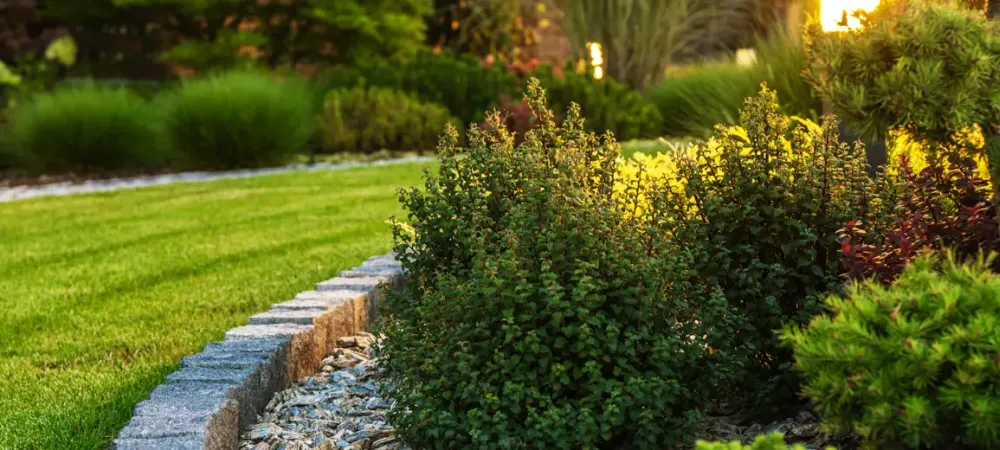3 Tips for Mulching Around Trees and Shrubs

Trees and shrubs deserve to be treated with the best care we can provide. They do so much for us from providing the oxygen we breathe to improving the beauty of our outdoor spaces and they even provide nutrition for us. When it comes to maintaining healthy trees in your yard, mulching is a must!
Why You Should Mulch Around Trees and Shrubs?
Mulch is an all around great addition to your landscape that not only adds beauty to your outdoor space, but also fulfills a protective role as well.
Mulching protects trees and shrubs by suppressing weed growth, increases moisture content in the soil, and adds organic matter improving the overall health of root systems.
What is the Best Mulch to Use Around Your Trees and Shrubs?
Mulch is a combination of organic material that comes in different forms ranging from grass clippings, shredded leaves, straw, or more commonly bark. These organic materials are a great addition to your beds because they not only provide the same benefits as inorganic material, but they improve the health of the soil in the ground.
Some forms of inorganic mulch include black plastic, fabric for landscaping, or rocks. These offer some of the same benefits as organic mulch, just at a lesser degree since they decompose less quickly or efficiently. When it comes to deciding which one is best, it depends on the results you desire. Deciding on a mulch that helps with the overall health of trees and shrubs along with what you want it to look like are important considerations.
The most commonly sought after organic mulch is bark because it adds texture while improving the quality of soil composition. For inorganic options rocks or stones are the most common choice due to their low maintenance requirements.
Tips for Mulching Around Trees and Shrubs
- Don’t over mulch: Just like everything in life, too much of one thing can be bad. When applying mulch to your yard, be careful not to apply too much otherwise you run the risk of getting crown rot and other moisture driven pathogens.
- Mulching around trees: When mulching around trees be sure to not apply the mulch all the way to the base of the tree. This leads to uneven water distribution, crown rot, bark diseases, and other issues like insects. Instead be sure to leave a couple inches between the tree’s base and the mulch.
How Much Mulch Should You Use When Mulching Trees and Shrubs?
Understanding how much mulch to add is critical, yet intimidating. Too much mulch and you run the risk of moisture pathogens, encouraging diseases to spread to the trees and shrubs, and harboring insect infestations. However, not enough mulch and the soil becomes dry and weeds can become an issue.
For organic material mulch it is advised to keep between 2-4 inches of thickness. When buying mulch you will need to do some basic measurements of the areas that you want to mulch so you know how much to purchase.
Dial Environmental’s Lawn Care
When you’re ready to start making drastic improvements in your outdoor space, it can be difficult to understand what you may need, how much, and where to apply. Dial Environmental has been providing lawn care services, including mulching, for over 35 years. The Dial Environmental team comes equipped with the knowledge necessary to determine what will be the best type of mulch for your trees and shrubs, how much of it is needed, and even take the heavy workload off your shoulders. Contact Dial Environmental today and to receive a free quote for our lawn care services. Don’t let your trees and shrubs go another day missing out on the amazing benefits that come with mulching, get started today!
